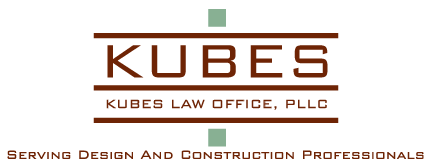Three Tools for Proactive Risk Management: Contracts, Fluent Dialogue and Change Management
By Kristine A. Kubes | Sunday, September 1, 2019
At CE website here: https://constructionexec.com/article/three-tools-for-proactive-risk-management-contracts-fluent-dialogue-and-change-management
Risk management is much more than insurance. For a successful business, it is a mindset. A prudent construction executive will utilize the following three strategies for proactively managing risk and protecting the company’s right to payment.
1. UTILIZE CONTRACTS AS A PRIMARY RISK MANAGEMENT TOOL
For construction and design firms, a contract is the first line of defense in managing risk. The contract outlines the expectations of the parties in the contractual relationship and ensures that they have agreed on the elements included. In addition to the parties and the price, the contract identifies a myriad of issues, terms and conditions that will govern the parties’ relationship.
The first hurdle for any company is to develop a contract that covers these terms thoroughly and accurately. The market has several providers of standard form contracts, which may then be customized, or a company may choose to develop its own manuscript contracts.
Realizing that one size contract may not fit all, it’s important to have various contract templates ready for different projects and relationships (e.g., a general contract with the owner with different pricing methods, such as cost-plus or lump-sum; a subcontractor agreement; a master agreement for subcontractors; and a design-build agreement for owner-contractor and contractor-subcontractor).
The next hurdle is for the company to actually utilize those contracts properly. In other words, select the appropriate contract for the project, complete the documents accurately, compile all necessary documents, obtain all requisite signatures before work begins and preserve a fully executed copy of the contract documents in a place that is both safe and accessible.
Without a fully signed, written contract, any issue could propel the parties into the battle of “he said/she said,” either side of which can be very difficult (and costly) to prove. A written contract that is signed by only one party may demonstrate one party’s intention, but the lack of all signatures may allow the other party to contest the contract terms.
2. BECOME FLUENT IN CONTRACTING TERMS
The parties to a contract need to speak the same language to understand one another. This contract language is more nuanced than the native speaker’s language; it speaks of construction, design, performance, insurance, payment, penalties and disputes.
Essentially, the contract is an outline for dialogue between the contracting parties. Yet, many companies do not walk through the contract terms carefully themselves—or with their contracting party—to understand the implications. As a result, companies can leave critical questions unresolved, such as:
- Is the scope of work accurate?
- Are there any conditions to the commencement of the work, or should there be?
- What is the period of contract performance, and is it sufficient?
- How will the parties terminate the agreement, if necessary?
- How can the parties enforce contract performance?
- What conflict resolution process will the parties use?
For a project’s success, it is critical for that dialogue to occur and for the parties to understand and agree on their respective rights and responsibilities.
Many companies point to the speed of business today as an excuse for not thoroughly reviewing the terms of the contract. This is a missed opportunity to comprehend the company’s risk and, just as importantly, to build relationship and understanding between the parties that will support them throughout the project.
Proactive construction executives will cultivate their own level of fluency in contracting terms in order to understand the full nature of the deal, why certain terms matter, when they may be facing risk and how to protect themselves.
3. MANAGE CHANGES TO MANAGE RISK
Contract changes expose design and construction companies to significant risk. Studies show that an average of 35% of all construction projects will encounter a major change in scope, and 25% of projects expand the scope of work by 30%. Contractors risk the loss of payment if they do not manage the changes properly.
Changes may impact construction scope, cost, materials and equipment needed at the site, sequencing and schedule. If the owner is not willing or able to change the completion date, the contractor may absorb a dramatic increase in the cost to supplement labor and/or equipment to meet the original completion date. Sequencing changes can affect labor productivity and cause conflicts for space and access among overlapping trades.
Given these risks, the need for change management is critical to protect a company’s bottom line on a project. The obvious critical elements of change management include preparing the change order, obtaining the owner’s written authorization per contract requirements, tracking costs and maintaining records properly to support a potential claim.
But in reality, the less obvious elements of change management are just as critical: ensuring that field staff and management understand the contract requirements for changes; developing an action plan for the team to respond to changes; and establishing priorities for communications, delegating duties and setting timelines for responding.
Written by Kristine A. Kubes – Principal and Construction Attorney, Kubes Law Office, PLLC
Contact Info: kristine@kubeslaw.com
Kristine Kubes is a frequent educator and advisor on ethical practice, licensing and risk management for the design/construction markets, and is the national incoming chair of the American Bar Association Forum on Construction Law.




